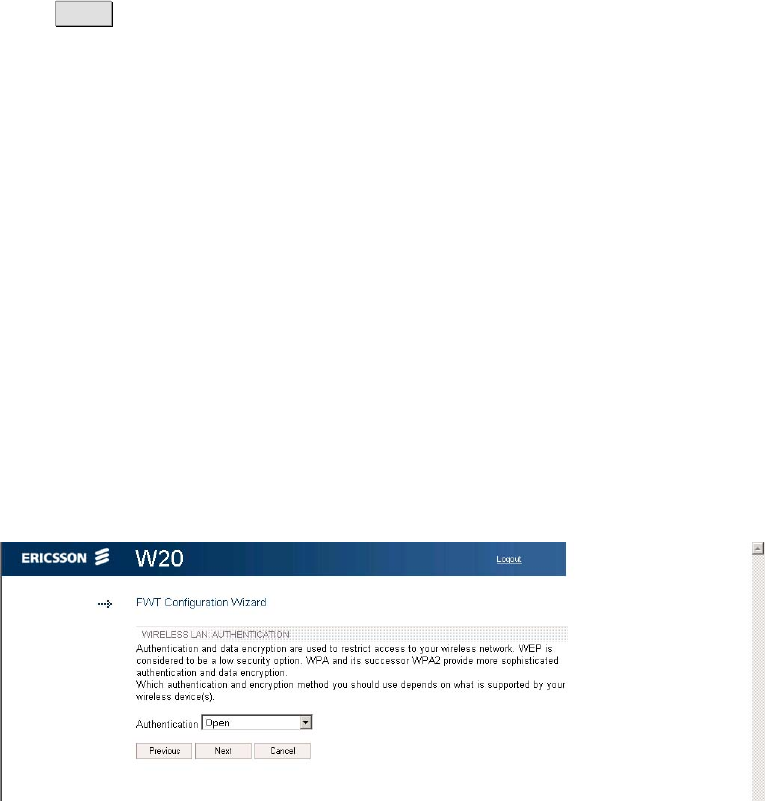
Configuration and Management
name in the Network name (SSID) field on the Wireless LAN: Network
Name page.
If the SSID broadcast option is enabled, your local wireless device(s) will
find the network name when scanning the air. If the option is disabled, the
network name is hidden and has to be manually provided to the wireless
device(s). To disable network name broadcast, clear the Enable
SSID
broadcast check box on the Wireless LAN: Network Name page.
Click Next to proceed.
Authentication
The wireless data transmissions can be protected from potential intruders
and eavesdroppers through standard authentication and encryption
methods. Authentication is used to restrict access to the wireless network.
Encryption is the translation of data into a form that cannot be easily
understood by unauthorized users. The encrypted data can only be sent
and received by users with access to a private encryption key.
WEP (Wired Equivalent Privacy) is considered to be a low security option.
WEP encrypted data is translated into blocks of either 64 bits length or 128
bits length.
WPA (Wi-Fi Protected Access) and its successor WPA2 are the most
reliable security options. WPA encryption uses the Temporal Key Integrity
Protocol (TKIP) while WPA2 encryption follows the Advanced Encryption
Standard (AES). AES offers a higher level of security and is approved for
sensitive corporate and government data transmission.
Figure 15 Wireless LAN: Authentication page
Note: Make sure that the operating system(s) and wireless LAN
interface(s) of the wireless client(s) support the selected authentication
method.
14 1/1551-CRH 102 167 PA15 2006-08-16


















